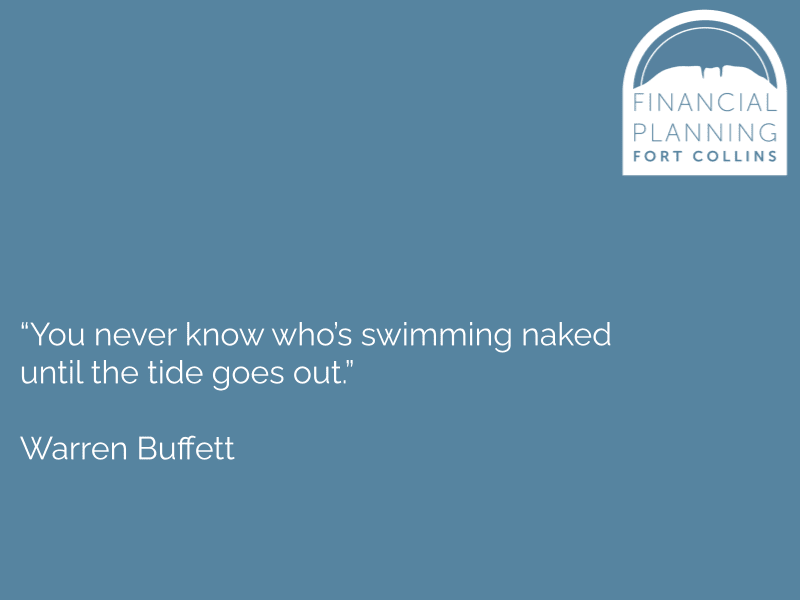
There’s a lot of financial noise out there these days, and our team tries to help clients like you focus on what’s important — your financial plan. When you position your resources to help you reach your goals, we commit to continue following the plan.
Current events have inspired similar questions from multiple clients, and we wanted to consolidate some answers in this blog post. Here, our entire team of CFP® pros will answer some of our most frequently asked questions.
Question 1: How are we preparing for inflation?
Answer from Director of Cash-Flow and Insurance Planning, Regina Neenan
Let me share with you a very short timeline …
June 10: Friday’s Consumer Price Index (CPI) report
Inflation is certainly uglier these days. Since I last reported on it back in December 2021, it’s continued to increase — and make headlines. It has now reached the 40-year high-water mark. Literal signs continue to lurk all around us, from the gas pump to grocery store shelves. And if you’ve just recently spotted that dreaded shrinkflation, you’re not alone.
If you take a look back at my last article, you’ll see that November’s CPI reading was a 6.8% increase over the previous November’s costs. This month’s CPI report showed an 8.6% increase in May compared to May 2021. That’s the steepest increase since 1981 — and an additional 2% uptick over that six-month window.
An unfortunate side effect of increased expenses on the things we need on a daily basis is a drop in the personal savings rate. Because many salaries haven’t kept pace with inflation, I’m seeing outflows in expense categories grow in cash-flow plans. The same “stuff” is simply more pricey than it used to be. Seeing the ability to save decrease or that extra “fun money” in black at the bottom of a budget plan worksheet drop is proof of the matter.
Back to the titular question: How are we preparing for inflation? An easy — but certainly not fun — way to adapt and prepare for any future inflation increase is by focusing on saving. The tough truth is that times like these are a reminder to pay yourself first — and cut out some “fun” purchases as necessary until inflation begins to normalize and/or that next raise comes your way. You can also check out my blog on conscious consumption for money-saving hacks!
Already feeling the squeeze? Ready for a bit of the proverbial tightening of the belt to lessen the impact of any potential future inflation on your funds? Just time to check in on or make a plan to top off your emergency/opportunity fund? Feel free to grab some time on my calendar for a cash-flow planning update. Just because inflation is a fact doesn’t mean that it has to be painful.
And you won’t be the only one duking it out with inflationary pressures. The Federal Reserve is also putting up a fight.
June 15: Today’s Federal Reserve Meeting
The Federal Reserve again increased the benchmark interest rate — today, actually — in yet another attempt to tamp down inflation. And this was a big one. Members of the Federal Open Market Committee had said that we’d likely see a half-point rate hike today. Then inflation reared its ugly head.
In trying to manage that inflation, the Fed increased the federal interest rate by 0.75%. That’s the largest increase in a single day since 1994 — nearly 30 years.
What does that mean for you and me? Likely increases in high-yield savings rates that are now hovering around the 1% mark and inching back toward their namesakes — as well as higher borrowing rates. The national average mortgage rate is now right around a whopping 6%, so it could also mean a cool-down in the recently red-hot housing market.
As we all work to weather the beginnings of this latest bear market, you’ve been asking about I-Bonds and whether they could fit into your strategy — especially if the Federal Reserve isn’t able to manage a soft landing with inflation.
Question 2: Should I invest in I-Bonds?
Answer from Director of Investment and Tax Planning, Jason Speciner
With inflation so low for so long, I-Bonds had become less relevant since they were introduced in 1998. Prior to November 2021, the highest inflation-indexed rate an I-Bond ever paid was 5.7%, annualized in November of 2005 — and right around then, even cash was paying close to 5%.
However, as inflation has gained serious momentum over the past 18 months, I-Bonds have become the in thing. With cash yielding next to nothing now, I-Bonds offer a yield that’s adjusted for that rising inflation. In theory, this ensures that at least a portion of your investment portfolio is keeping up with the cost of goods and services. That’s great!
The thing is, I-Bonds are … kind of awkward. They’re limited in purchase amount, source, and liquidity. And because of these factors, the impact I-Bonds have in most investment portfolios is actually going to be fairly limited.
A little more than a decade ago, you could purchase up to $30,000 per person per year in I-Bonds. But with today’s limits of $10,000 per person per year (plus $5,000 if you direct that your tax refund is invested in I-Bonds), a maximum I-Bond purchase is likely to bring in around $1,000-$1,500 over the next 12 months. A nice take, sure, but not quite the inflation-slaying portfolio-saving hedge we’d all like it to be right about now.
With that said, there’s nothing wrong with systematically parking $10,000 per person per year into I-Bonds. That’s assuming you’ve reached the part of your savings hierarchy where taxable general-purpose investing is your best option and you don’t intend on using the money for at least 12 months and likely not for 60 months.
Said another way, your $10,000 purchase of I-Bonds today isn’t going to be a big enough counter-measure against the general market decline and rising prices happening now. But systematic purchases of I-Bonds over a period of several years will likely eventually create enough relative value to make a material difference in your net worth … if inflation flares up again.
3 Things to Know About I-Bonds
Thing 1: I-Bonds are not a cash alternative in the short term. In fact, you cannot redeem an I-Bond at all for 12 months after purchase. After 12 months, I-Bonds can be redeemed within the first 60 months for a 3-month interest penalty. In short, if you’re purchasing I-Bonds for the first time this year, remember that an I-Bond is an intermediate- to long-term investment, not a high-yielding liquid cash alternative.
Thing 2: The fixed interest rate on an I-Bond purchased today is 0%. That’s right: nothing. It is only the variable inflation-indexed rate that’s providing any yield (currently 9.62% annualized). When inflation moderates (and it will), the rate can return right back to as low as 0% (which has happened twice when the inflation-indexed rate was negative). Owning lots of I-Bonds today would be great, but it would also mean that you waited out several years of very little to no after-tax real return. (not coincidently, this is likely the reason why you don’t own lots of I-Bonds today — your money was more productive elsewhere).
Thing 3: You can only purchase I-Bonds from treasurydirect.gov and never within a tax-qualified registration like a 401(k) or IRA. Unless something changes, I-Bonds will likely always be a sort of standalone component of your investment portfolio. The savings bond program was designed for “small” (relative to institutions, pensions, governments, etc.) investors. So, even in its modern form, it will probably keep the little quirks like this.
Bonus thing: There’s a hack of sorts that will allow you to purchase more than the annual maximum amount of I-Bonds. It’s a bit gimmicky (and not something I recommend) but it does technically work. The way the gift system for savings bonds is set up, you can hold bonds you purchase as gifts in a ‘to be distributed’ type of status. The theory goes that you could buy several of these gift bonds now, in unlimited amounts — which will earn today’s inflation-adjusted rate — and give them to the recipient (a spouse or child) in the future. The future gift counts against the recipient’s annual purchase limit in the year received. Unfortunately, this is a wildly illiquid way to game this system, so tread extremely lightly, if at all.
Question 3: Are we headed toward a recession?
Answer from Director of Estate and Financial Planning, Dan Andrews
Economic and business cycles follow patterns. The St. Louis Federal Reserve shares a chart that illustrates the frequency of recessions in recent history.
As you can see, some recessions are shorter than others. Since 1990, the United States economy expanded a great deal more than it contracted in times of recession. Yet, when recessions inevitably occur, some unprepared businesses struggle and may even cease to exist due to times of slow or negative economic growth.
Warren Buffett is credited with coining a popular financial phrase about people who aren’t prepared when recessions occur.
 When unprepared businesses fail during recessions, a cascading hardship can affect the similarly unprepared households of the employees of those failed businesses, sectors, regions, and so on. Elevated unemployment and financial distress follow and are hopefully only temporary, like the most recent recession. For example, according to the National Bureau of Economic Research, “The recession lasted two months [April and May of 2020], which makes it the shortest US recession on record.”
When unprepared businesses fail during recessions, a cascading hardship can affect the similarly unprepared households of the employees of those failed businesses, sectors, regions, and so on. Elevated unemployment and financial distress follow and are hopefully only temporary, like the most recent recession. For example, according to the National Bureau of Economic Research, “The recession lasted two months [April and May of 2020], which makes it the shortest US recession on record.”
So, my answer to clients when they ask, “Are we headed toward a recession?” My answer is always, “Yes, I just don’t know when.”
As a client, you can gain ownership by focusing on the financial goals within your financial plan. You can accomplish many goals in good economic times and bad by increasing your savings rate, diversifying your investments into multiple sectors of the financial markets, controlling your investment costs, optimizing tax-efficient savings and investment strategies, and sticking to the plan during tough times.
To help clients through these difficult times, we encourage you to create guiding principles. These mantras can help you stay the course. If you’re finding yourself having trouble with the recent volatility, here are some examples of guiding principles that may help:
“Think of the bigger picture and your long-term effects.”
“Be mindful of what you’re doing.”
“Be flexible. There are different ways to accomplish what you want to do.”
“Take a deep breath and enjoy life.”
“It’s only getting better.”
And if the guiding principles aren’t doing it for you, then keep actively increasing your savings so yours isn’t one of those households “swimming naked.”
That wraps up our Q&A session but, if you have questions of your own, let us know! You can submit your own queries to .
